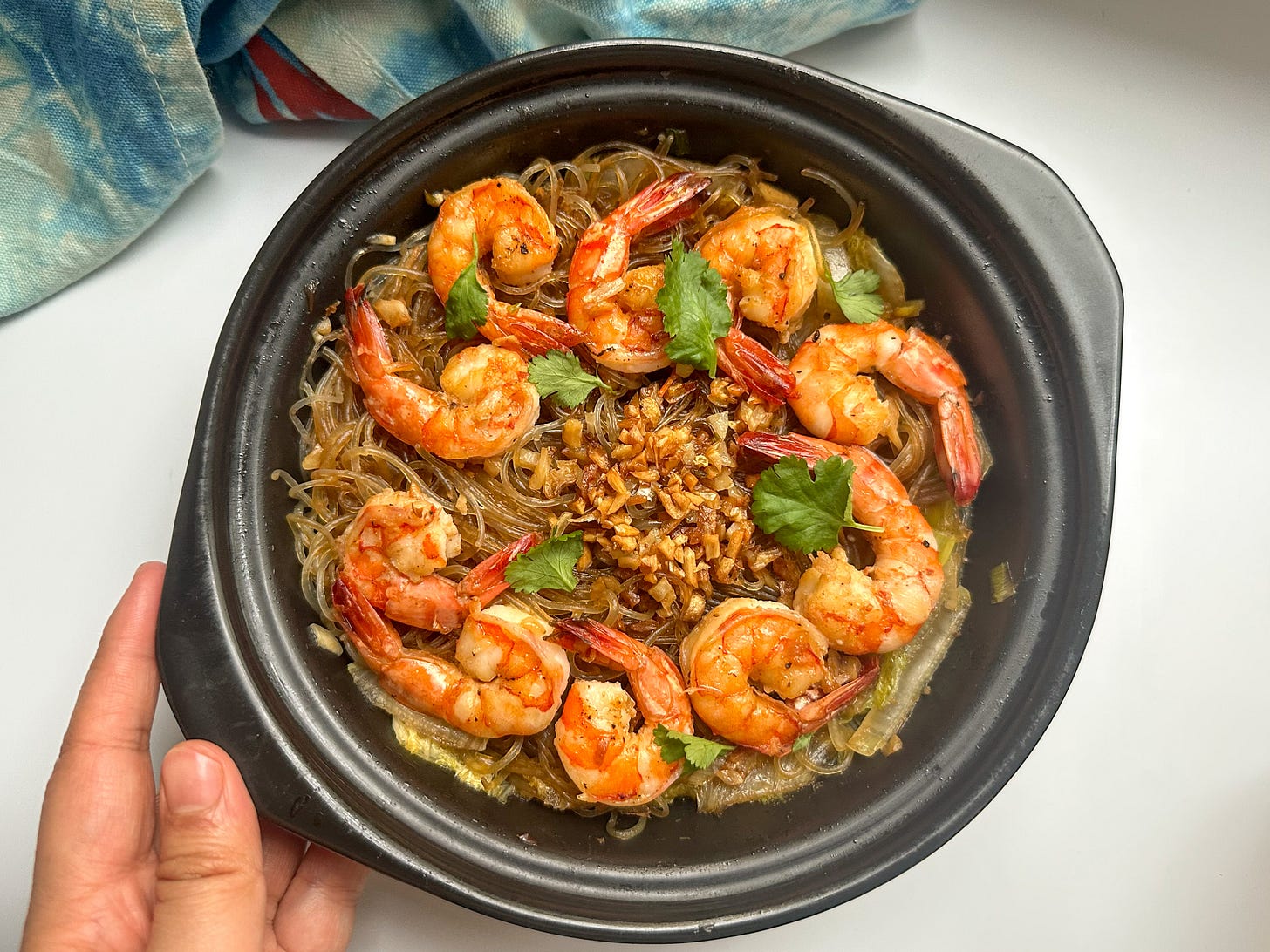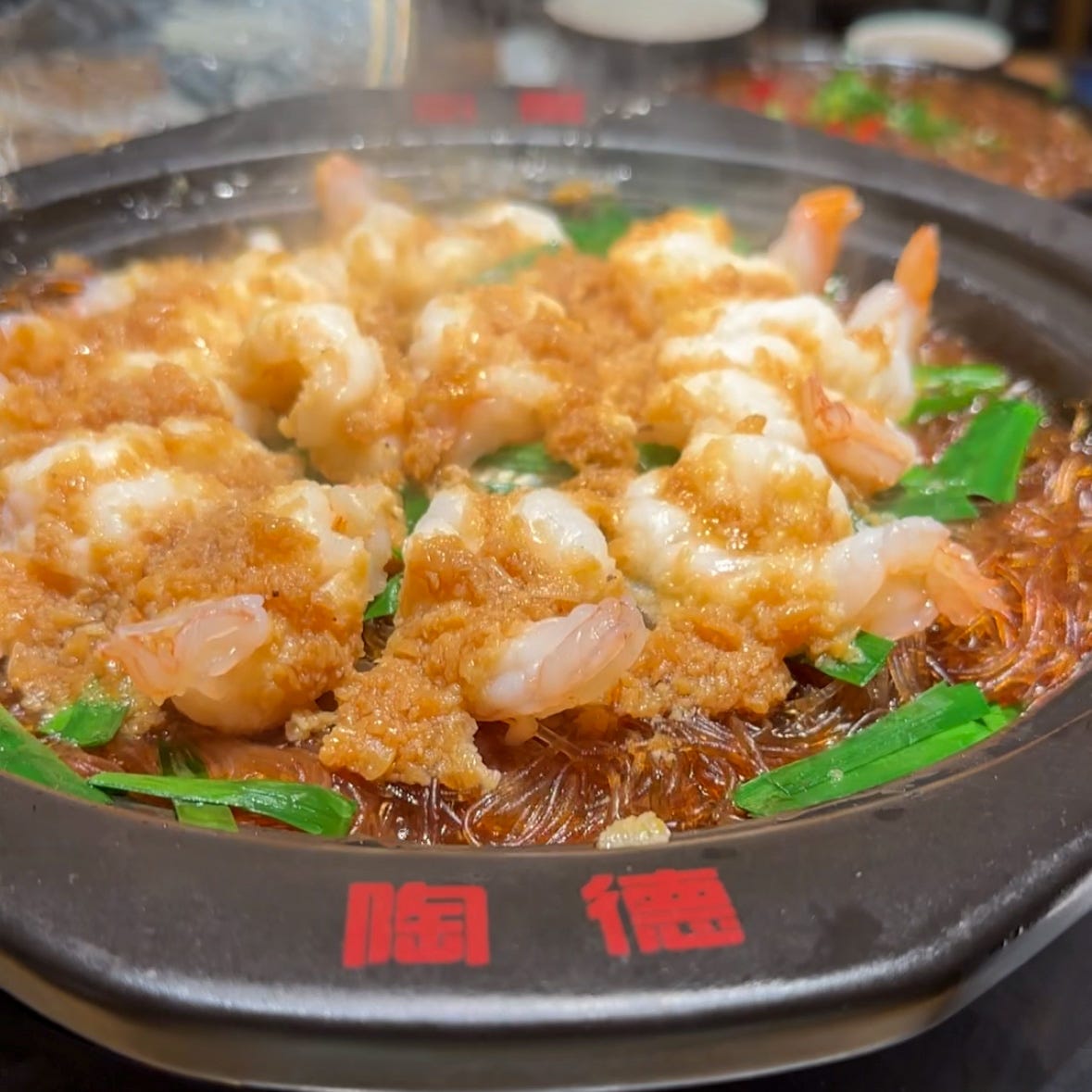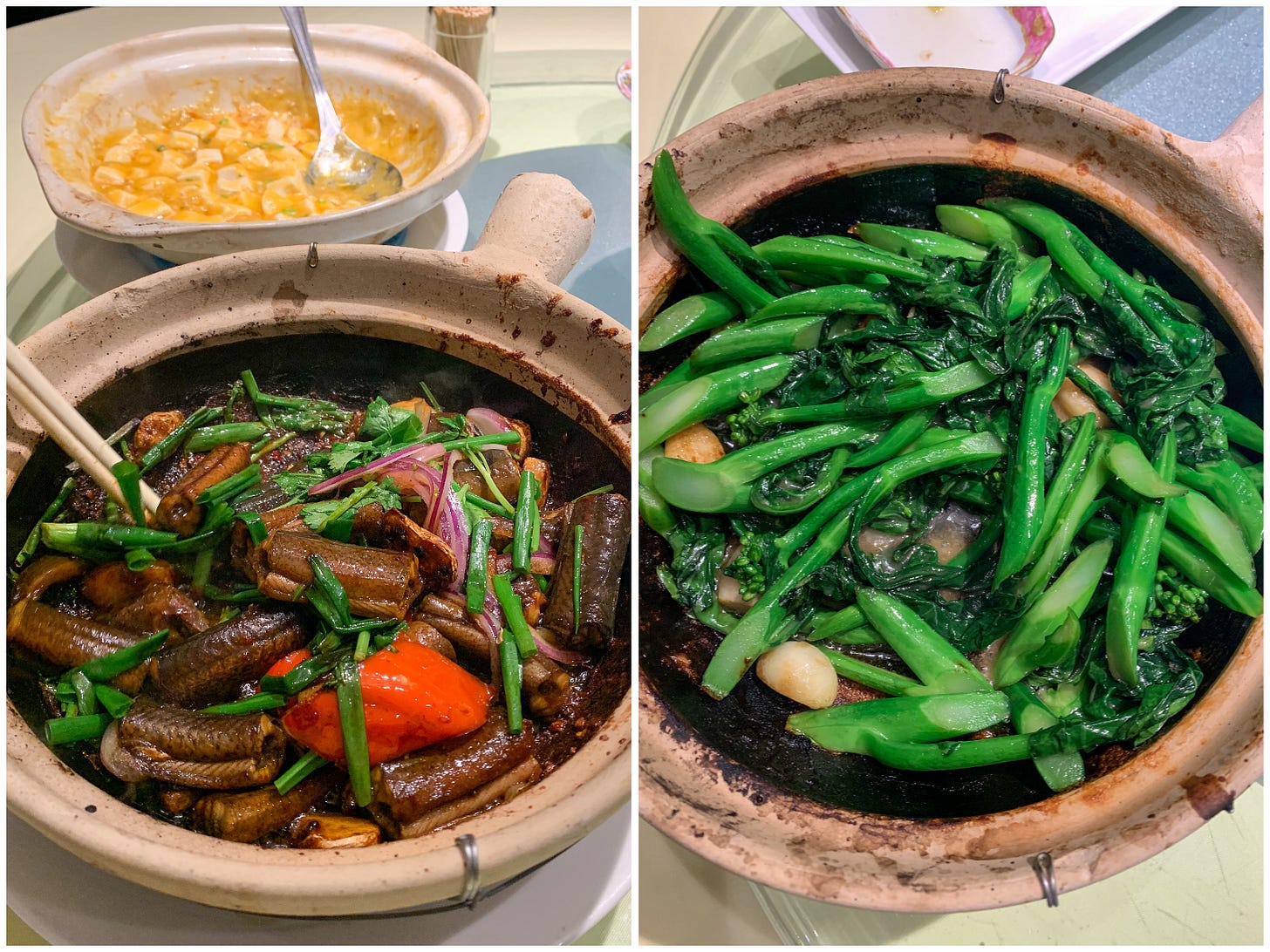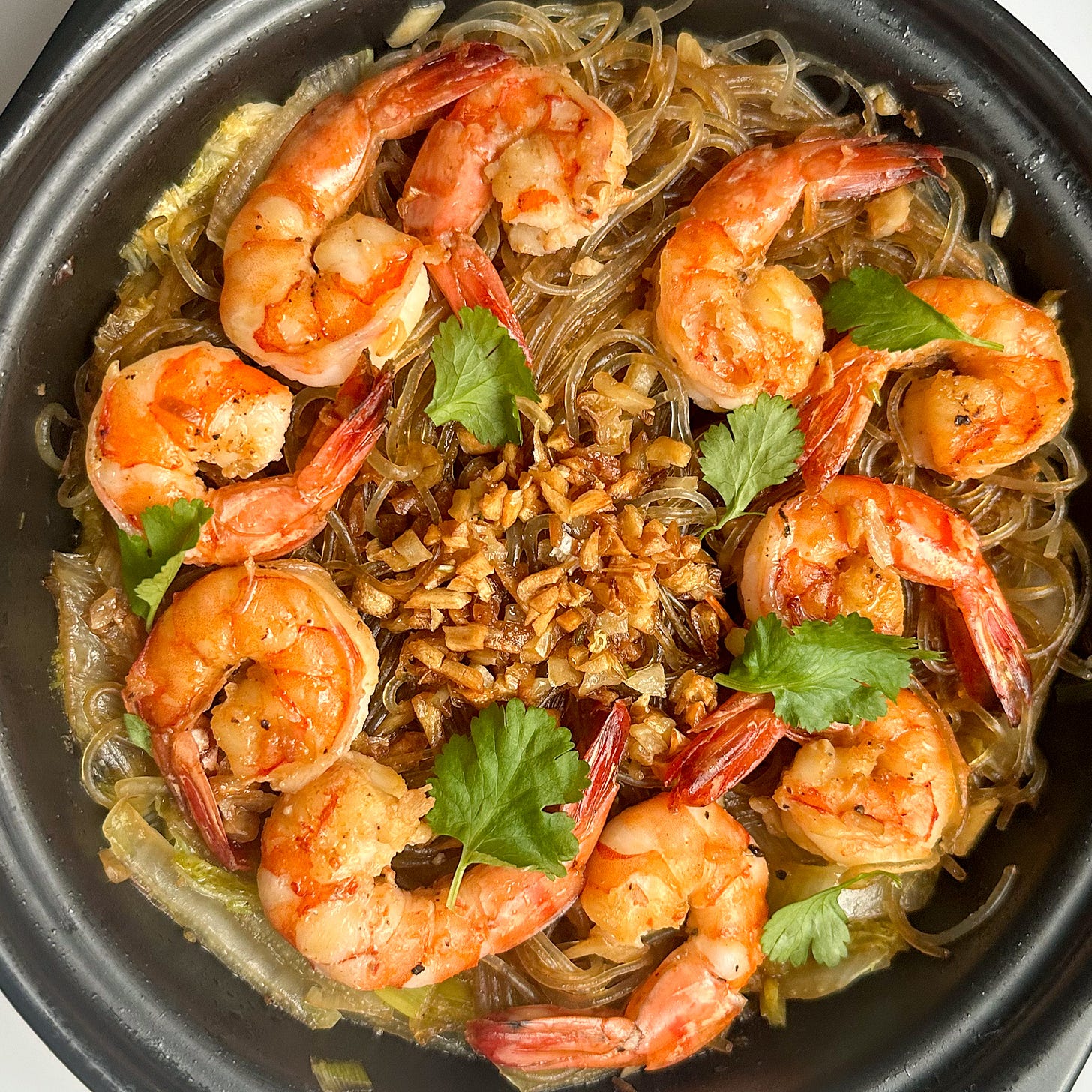Hey there! I’m currently visiting family back in Sichuan, so this newsletter is a bit delayed (blame the travel chaos). But more about what I eat in China is headed your way!
During my April visit to a popular Chengdu restaurant specializing in clay pot cooking, the most-ordered dish was their garlicky shrimp with vermicelli noodles (蒜蓉虾粉丝煲). Plump shrimps nestled on a bed of vermicelli topped with golden minced garlic, still sizzling hot. This dish stole the spotlight on every table, winning over both kids and grown-ups.
The clay pot, known as sha guo (砂锅) in Chinese, is among the oldest cooking vessels used in Chinese and various other cuisines. Its properties ensure even heating, flavor concentration, and prolonged heat retention, perfect for making braised and stewed dishes. In Sichuan, dishes made with sha guo have been popular for decades and enjoying a renaissance with expanding chain stores.
This clay-pot vermicelli dish is likely originated from a Cantonese dish: vermicelli pot with seafood (海皇粉丝煲). Cantonese cooking generously employs clay pots for rice, stews, and nearly every ingredient. Traditionally, it includes an abundance of dried seafood and xo sauce (similar to this xo crab with vermicelli). I still vividly remember waiting outside a clay pot restaurant in Guangzhou for two hours. The steaming, bubbling pots instantly cured my growling stomach, leaving a memory filled with sounds, aromas, and steam.
So, here's my homemade take on the shrimp and vermicelli dish, adding some crisp, in-season Napa cabbage. Cooking shrimp is easier than I often assume, and it's a reminder to myself that I genuinely enjoy eating them. Whether it's a winter indulgence or a special holiday dish you're after, give it a try!
The recipe
Servings: 2-3
50g dried mung bean vermicelli
1/2 tsp dark soy sauce
5 cloves garlic
2 scallions
8-10 large shrimps (with head and shell)
100-150 ml hot water
5 pieces of Napa cabbage
salt
pepper
vegetable oil
cilantro for garnishing
Serve with steamed rice
⠀Sauce:
2 tbsp light soy sauce
2 tbsp oyster sauce
1/2 tbsp sugar
1/2 tsp white pepper
Instructions
Soak the vermicelli in lukewarm water for about 15-20 mins. Drain and toss with 1/2 tsp dark soy sauce.
Mince garlic and scallion, reserving some scallion greens for garnish. Prepare the shrimps by removing the heads and shells (keeping the tails), and devein them. Season the shrimp with salt and pepper.
For the shrimp stock: In a saucepan, heat oil over medium-low heat, add shrimp heads and shells, and fry for about 3 minutes until the oil turns golden. Then, deglaze with hot water, bring to a boil, and simmer for 7-10 mins. Sieve and set the stock aside.
In the clay pot, heat oil over medium heat, fry shrimps until cooked, then remove and set aside. In the same pot, fry minced garlic until golden (set some aside for garnishing).
Add scallions and fry until fragrant. Then add the cabbage, soaked vermicelli noodles, and 1/2 of the shrimp stock. Bring to a simmer and cook over medium heat until the stock is absorbed. Add the remaining shrimp stock, cook until the
Add back the shrimp, sauce and golden garlic. Simmer covered for 5 min. until the broth is almost cooked off. Garnish with scallion greens and cilantro. Serve with steamed rice.
*watch me make it here!
Notes on preparation
I used frozen black tiger shrimp (or prawns, I'm still trying to tell the difference) with shells from Asian grocery stores (). The shrimp stock adds a deep umami flavor to the vermicelli. If you can’t find shrimps with shells, consider substituting them with vegetable or chicken stock, or simply use boiling water.
The vermicelli, also known as glass noodles, is made with mung bean starch (I used this type). Mixing the vermicelli with dark soy sauce enhances its color after cooking. If your vermicelli strands are too long, you can cut them with kitchen scissors after soaking.
While most clay pots are best suited for gas stoves, the one I used worked fine on my electric stove (similar to this one). But check the instructions! I avoid high heat as the pot might crack.
Alternatives to clay pots: use a small cast-iron pot, dutch oven, or any deep frying pan with a lid.







